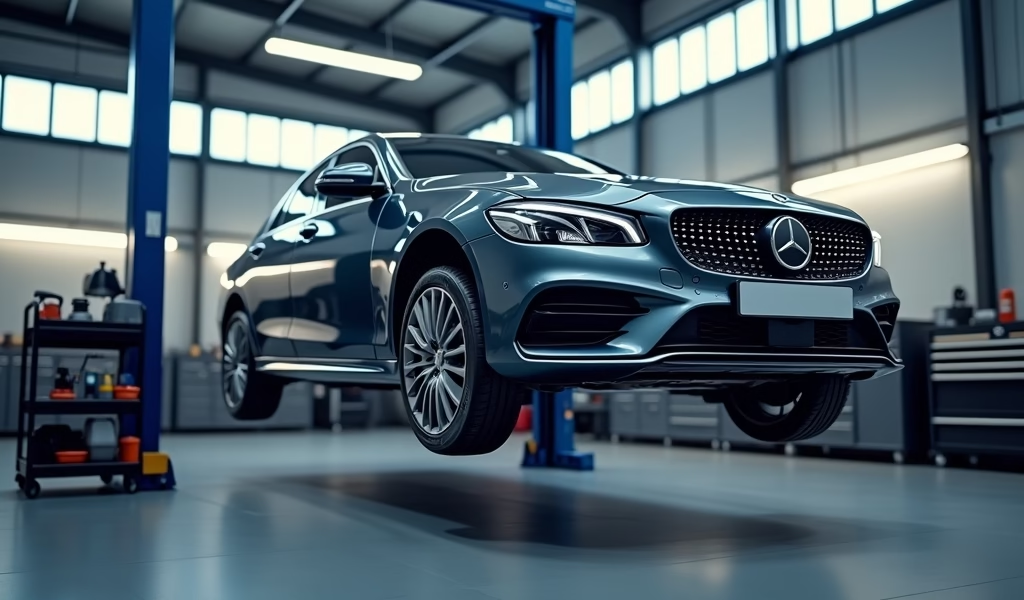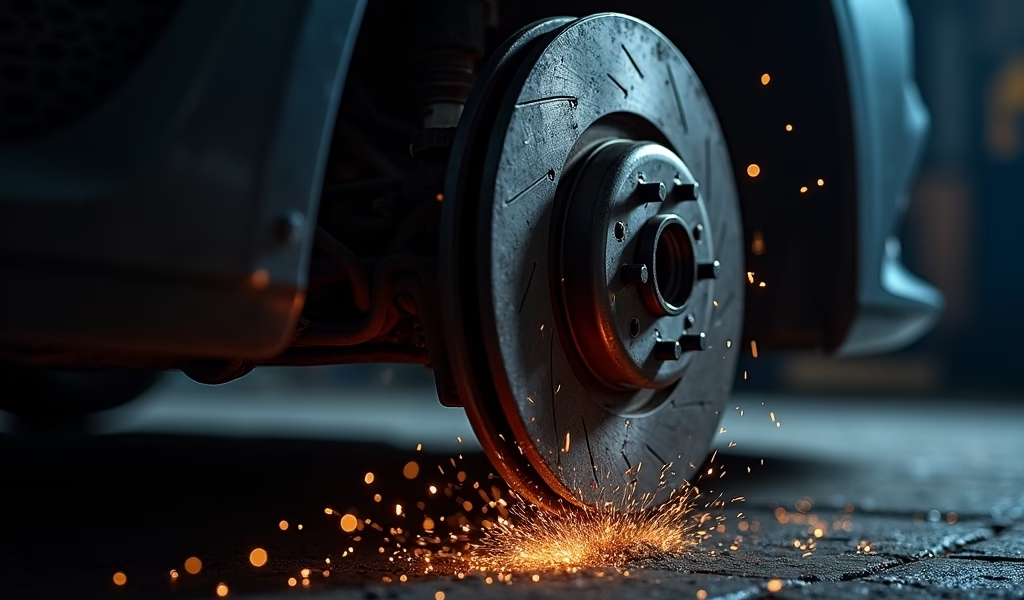Overview
Regular brake maintenance is crucial for road safety, with key warning signs including unusual sounds, pedal feel changes, and visual indicators that shouldn’t be ignored. Professional brake service includes comprehensive inspection of pads, rotors, fluid, and other components, while proper driving techniques like anticipatory braking and engine braking can significantly extend brake life.
Table of Contents
- Why Brake Maintenance Matters
- Understanding Your Brake System
- Warning Signs You Need Brake Service
- DIY Brake Inspection Tips
- Professional Brake Service: What to Expect
- Brake Maintenance Schedule
- Brake Driving Techniques for Different Conditions
- Conclusion
- Frequently Asked Questions
Why Brake Maintenance Matters
Your vehicle’s brakes are the most critical safety system you rely on every day. That split-second when you need to stop suddenly can be the difference between a close call and a devastating accident. According to the National Highway Traffic Safety Administration, brake-related problems cause approximately 22% of mechanical-failure crashes on our roads.
Think about it—you’ve invested thousands in your vehicle, but what good is all that engineering if you can’t stop when needed? Regular brake maintenance isn’t just about preventing costly repairs (though it definitely does that too); it’s about protecting what matters most: you, your passengers, and others sharing the road.
I’ve seen too many preventable accidents in my 20+ years as a mechanic. Drivers who postponed brake service to “save money” ended up with repair bills ten times higher after a collision—not to mention potential injuries. Brake maintenance is genuinely one investment where cutting corners isn’t worth the risk.
Understanding Your Brake System
Your car’s braking system works through an ingenious combination of physics, hydraulics, and friction. When you press the brake pedal, it activates a master cylinder that pressurizes brake fluid through lines connected to each wheel. This hydraulic pressure multiplies your foot’s force by about 35 times—turning a gentle push into enough stopping power for a two-ton vehicle.

Most modern vehicles use disc brakes at all four wheels, though some still use drum brakes on the rear. In disc brake systems, the pressurized fluid pushes the brake caliper pistons, which squeeze brake pads against a spinning metal disc (the rotor). This friction converts your car’s kinetic energy into heat energy, slowing the wheels and bringing your vehicle to a stop.
The key components include:
- Brake pads: The friction material that presses against the rotors
- Rotors: Metal discs that spin with your wheels
- Calipers: Hydraulic clamps that push the pads against rotors
- Brake fluid: The hydraulic liquid that transfers force throughout the system
- Master cylinder: Converts mechanical force to hydraulic pressure
- Brake lines: Carry pressurized fluid to each wheel
While this system is remarkably reliable, it’s also subject to natural wear. Every time you press the brake pedal, a tiny amount of brake pad material wears away. Over time, this accumulates until the pads become too thin to function properly—typically after 30,000 to 70,000 miles depending on driving habits and conditions.
Brake fluid also degrades over time. Unlike engine oil, it doesn’t burn off, but it does absorb moisture from the air, which reduces its effectiveness and corrodes internal components. Studies from the NHTSA show that brake fluid with just 3% water content lowers the boiling point by almost 100°F, significantly compromising braking performance.
Warning Signs You Need Brake Service
Your car is surprisingly communicative when brake problems develop. Learning to recognize these early warning signs can save you from both expensive repairs and dangerous situations. Here are the most common signals that your brakes need attention:
Unusual Sounds
That high-pitched squeal isn’t your car singing along to the radio. Most brake pads come equipped with wear indicators—small metal tabs that make contact with the rotor when pad material gets too thin. This built-in alarm system is designed to alert you before complete failure occurs.
A grinding sound is even more serious. This metal-on-metal noise indicates your pads have worn completely through, and the backing plate is now contacting your rotors—causing expensive damage with every press of the pedal.
Physical Feedback
When your brake pedal feels spongy or sinks to the floor, you likely have air in the hydraulic system or a fluid leak. Both conditions reduce braking effectiveness and require immediate attention.
A pulsating brake pedal or steering wheel vibration during braking typically indicates warped rotors. These distortions develop from excessive heat, often caused by aggressive driving or mountain descents where brakes are applied continuously.
If your vehicle pulls to one side during braking, you may have uneven brake pad wear, a stuck caliper, or contaminated brake fluid. This condition makes controlling your vehicle difficult, especially during emergency stops.
Visual Indicators
Checking your wheels for brake dust buildup can reveal braking patterns. A significant decrease in dust on one wheel compared to others suggests that wheel’s brake isn’t engaging properly.
Brake fluid should have a clear to amber color. Dark brown or black fluid indicates contamination and reduced effectiveness. A low fluid level in the master cylinder reservoir often points to a leak or severely worn pads.
According to CarMD’s Vehicle Health Index, ignoring brake warning signs leads to an average repair cost increase of 28% compared to addressing issues early. More importantly, compromised brakes extend your stopping distance—at 60 mph, even a 10% reduction in braking efficiency adds 20-30 feet to your stopping distance.
DIY Brake Inspection Tips
While comprehensive brake service requires professional tools and expertise, several simple checks can help you monitor your brake system between services. These basic inspections require no special skills and minimal tools:
Visual Brake Pad Inspection
Most vehicles allow you to check brake pad thickness without removing the wheels. Simply:
- Look through the spaces between your wheel spokes
- Locate the shiny metal rotor and the brake caliper
- Find the brake pad pressed against the rotor
- Check the thickness of the pad material (should be at least ¼ inch)
If the pad looks thin or you see only metal, schedule service immediately. For more accuracy, some auto parts stores loan brake pad measuring tools free of charge.
Brake Fluid Check
Checking your brake fluid is simple:
- Locate the master cylinder reservoir under your hood (consult your owner’s manual if needed)
- Ensure the fluid level is between the “MIN” and “MAX” markings
- Note the fluid color—it should be clear to amber, not dark brown or black
Low fluid can indicate either worn pads or a leak. If levels drop again after topping off, have the system inspected professionally for leaks.
Brake Performance Test
Find an empty parking lot or quiet road and perform these simple tests:
- With the engine running and your foot off the brake, press the pedal steadily—it should feel firm, not spongy
- From about 30 mph, apply the brakes normally—the vehicle should stop straight without pulling
- Listen for unusual sounds during braking
While DIY checks can catch obvious issues, they can’t replace professional inspection. Brake systems have many components hidden from view that require specialized equipment to evaluate properly.
Professional Brake Service: What to Expect

When you bring your vehicle in for professional brake service, a thorough inspection should include several key elements. A reputable shop won’t just glance at your brakes—they’ll conduct a comprehensive evaluation including:
- Measuring brake pad thickness with precision tools
- Inspecting rotors for thickness, warping, and surface conditions
- Checking calipers for proper operation and potential leaks
- Testing brake fluid for contamination and boiling point
- Examining brake lines and hoses for cracks or deterioration
- Verifying proper operation of the master cylinder
- Performing a road test to confirm system performance
Based on this inspection, your mechanic should provide a detailed breakdown of recommended services, prioritized by safety concerns. Common brake services include:
Brake Pad Replacement
The most frequent service involves replacing worn brake pads before they damage other components. This typically costs between $150-300 per axle (both front or both rear wheels) depending on your vehicle and the quality of replacement pads.
Many shops offer different grades of brake pads. Economy pads cost less upfront but typically wear faster. Premium pads cost more initially but often last longer and provide better performance. For most drivers, mid-grade pads offer the best balance of cost and longevity.
Rotor Service
Rotors can either be resurfaced (machined to remove surface imperfections) or replaced entirely. Modern vehicles often have thinner rotors designed for replacement rather than resurfacing. This service typically adds $100-200 per axle to the cost of pad replacement.
According to AAA’s automotive research center, replacing rotors and pads together often provides more consistent braking performance and can be more cost-effective in the long run than resurfacing marginally serviceable rotors.
Brake Fluid Flush
This service replaces old, contaminated fluid with fresh fluid that meets your vehicle’s specifications. Most manufacturers recommend this service every 2-3 years regardless of mileage. A complete flush typically costs $80-150 and significantly improves brake performance and component longevity.
When discussing service options with your mechanic, don’t hesitate to ask questions. A reputable shop should willingly show you the worn components and explain how they measure against manufacturer specifications. If you’re quoted for caliper replacement (a more expensive repair), ask to see evidence of leaks or sticking that necessitates this work.
Brake Maintenance Schedule
Maintaining your braking system requires attention to both time and mileage intervals. While your owner’s manual provides vehicle-specific recommendations, here’s a general timeline that works for most vehicles:
Every 6,000-7,000 miles (or with oil changes)
- Visual brake pad inspection
- Brake fluid level check
Every 12 months or 12,000 miles
- Professional brake inspection
- Brake hose and line inspection
- Brake fluid condition test
Every 2-3 years
- Complete brake fluid flush
Every 30,000-70,000 miles (varies by vehicle and driving conditions)
- Brake pad replacement
- Rotor inspection/service
- Caliper service if needed
Remember that these intervals are guidelines, not guarantees. Your actual service needs depend heavily on driving habits and conditions. Several factors can significantly accelerate brake wear:
- Mountain driving or hilly terrain
- Frequent stop-and-go traffic
- Aggressive driving with hard braking
- Carrying heavy loads or towing
- Extreme temperatures (both hot and cold)
For example, a vehicle driven primarily in flat, rural areas might need brake pads replaced at 70,000 miles, while the same vehicle in mountainous San Francisco might require replacement at 30,000 miles. Fleet data shows that aggressive drivers can wear through brake pads up to three times faster than conservative drivers in identical vehicles.
The investment in routine brake maintenance pays significant dividends. Regular inspections typically cost $30-100 but can identify issues before they become expensive repairs. More importantly, well-maintained brakes respond predictably in emergency situations when split-second performance matters most.
Brake Driving Techniques for Different Conditions
How you use your brakes significantly impacts both their lifespan and your safety. Adopting these situation-specific techniques can improve your vehicle’s braking performance and extend component life:
Everyday Driving
Practice “anticipatory braking” by looking 10-12 seconds ahead of your vehicle. This expanded awareness allows you to spot potential stopping situations earlier, enabling gentler deceleration that’s easier on your brakes.
Avoid “riding” the brakes—resting your foot on the pedal while driving. Even slight pressure generates heat without providing meaningful deceleration, accelerating pad wear and potentially causing brake fade during subsequent stops.
Highway Driving
Maintain proper following distance to avoid panic stops. The “three-second rule” is a minimum—ideally, allow four to five seconds between vehicles at highway speeds.
When exiting highways, begin gentle braking well before the exit ramp. This gradual speed reduction is far easier on your braking system than waiting until you’re on the ramp to decelerate rapidly.
Mountain Driving
Use engine braking by downshifting to a lower gear when descending long grades. This technique reduces the load on your brakes and prevents overheating. Even automatic transmissions typically offer lower gear selections for this purpose.
Apply the “brake-and-release” technique for longer descents. Rather than riding the brakes continuously, apply them firmly to reduce speed by about 10-15 mph, then release completely to allow cooling before repeating. This approach prevents heat buildup that can cause brake fade.
Wet or Icy Conditions
In wet conditions, periodically apply light brake pressure when driving through standing water to help dry the brake components. This “brake drying” technique improves stopping performance when you need it.
On icy roads, use threshold braking—applying pressure just short of wheel lockup—to maintain control. If your vehicle has ABS, you’ll feel pulsation through the pedal when it activates. Maintain steady pressure and let the system optimize your braking force.
The Automobile Association Foundation found that drivers who employ these techniques experience up to 40% longer brake component life and significantly reduced stopping distances in emergency situations compared to those who don’t. Taking time to master these approaches provides both financial and safety benefits.
Conclusion
Your vehicle’s brakes are working hard even when you don’t notice them. They convert the tremendous energy of your moving vehicle into heat every time you slow down or stop. This critical safety system deserves regular attention and maintenance to perform at its best when you need it most.
Remember that brake maintenance isn’t just about preventing costly repairs—it’s about ensuring your ability to avoid accidents and protect yourself and others on the road. The few minutes and dollars invested in regular inspection and timely service deliver immeasurable returns in safety and peace of mind.
Don’t wait until you hear that telltale squeal or feel your car pulling during braking. By that point, you’re likely facing more extensive repairs and potentially compromising your safety. Instead, follow the recommended maintenance schedule, listen to your vehicle, and address concerns promptly.
Safe driving starts with the ability to stop safely. Take care of your brakes, and they’ll take care of you.
Frequently Asked Questions
How often should I replace my brake pads?
Most brake pads need replacement every 30,000 to 70,000 miles, depending on driving habits and conditions. City driving and mountainous terrain accelerate wear significantly.
What’s the difference between cheap and expensive brake pads?
Premium brake pads typically offer longer life, better heat resistance, and quieter operation than economy options. The price difference often pays for itself through extended service life and better performance.
Is it normal for brakes to make noise?
Occasional light squeaking, particularly in damp conditions, can be normal. However, persistent squealing or any grinding noise indicates a problem that needs immediate attention.
Can I replace just the front or rear brakes?
Yes, front and rear brakes typically wear at different rates, with front brakes doing 60-80% of the stopping work. Always replace both sides of an axle (both front or both rear) together for balanced braking.
How do I know if I need new rotors or just pads?
Rotors typically need attention when they’re deeply grooved, below minimum thickness, or visibly warped. A professional inspection can measure these factors precisely to determine whether resurfacing or replacement is needed.


Pingback: Auto Tune Up Service: 5 Proven Fixes - knowsyourcar.com
Pingback: Brake Pad and Rotor Replacement Cost DIY - knowsyourcar.com